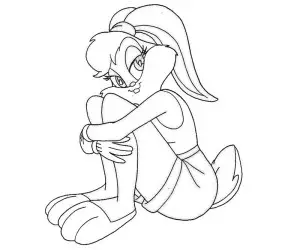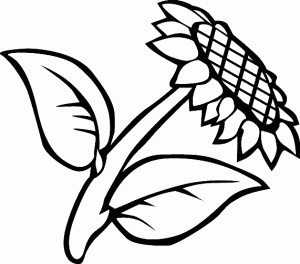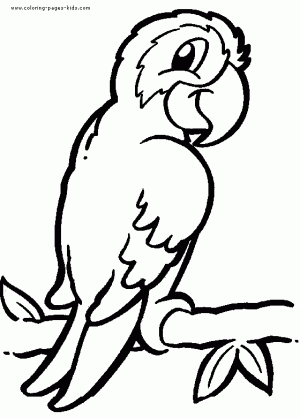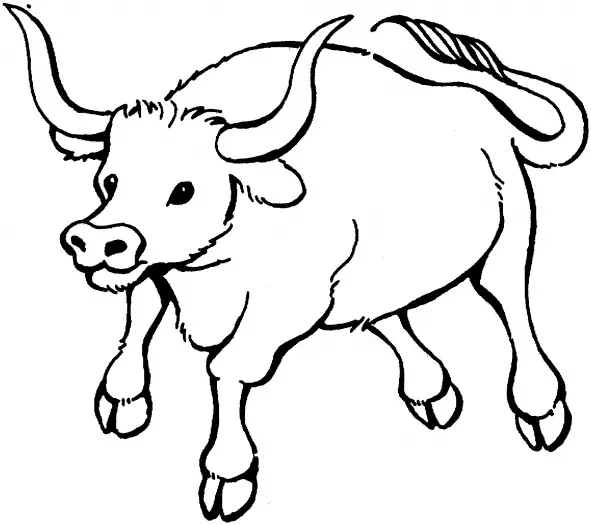 The story of the Standard of the World
The story of the Standard of the World
The Standard of the World lived up to its name in the Fifties and Sixties, but faced challenges from a changing world in recent decades. Despite that, Cadillac broke sales records and launched bolder cars than ever before.
The Fifties were surely the greatest years in history to work as an American automotive stylist, while Cadillac must have been the most exhilarating company to work for. This was because of the ambition and scope of Cadillac s ideas for what cars could be, best represented by the Motorama displays. GM s Motorama shows paraded futuristic ideas in front of a gawping public at fairly regular intervals between 1949 and 1961. For the first few years, only Cadillacs were shown, and from one of these dream boats arose the 1953 Eldorado.
You could argue that Cadillac needed a luxury line to separate a rarefied few products from the rest of production. After all, it had been 12 years since the VI6 was dropped and postwar Cadillacs were all essentially the same thing under the skin, even if the wheelbases varied. The new V8 engines were so good that no larger or more exotic variants were needed, but if you could persuade a few people to buy a convertible for $7750 rather than the $4144 needed for the Series 62 version without the wraparound windshield (another first), it had to be good for both profit margins and brand image.
 In the end, only 532 were sold from a terrific yearly total of 109,000, but once again the stylists started a fire that was to burn brightly for Cadillac over many years. Also new for 53 were the bullet or bomb-shaped protrusions on the bumpers, a feature that spread rapidly throughout the industry. They were still there in 56 when the Eldorado gained a tin-top sibling, the Seville. Like previous Eldos, they existed not just to put some separation into Cadillac s product line but to try out next year s features in small numbers to test reaction.
In the end, only 532 were sold from a terrific yearly total of 109,000, but once again the stylists started a fire that was to burn brightly for Cadillac over many years. Also new for 53 were the bullet or bomb-shaped protrusions on the bumpers, a feature that spread rapidly throughout the industry. They were still there in 56 when the Eldorado gained a tin-top sibling, the Seville. Like previous Eldos, they existed not just to put some separation into Cadillac s product line but to try out next year s features in small numbers to test reaction.
For 57, there were three Eldorados: the Biarritz convertible and the Seville coupe plus the extraordinary new Eldorado Brougham four-door hardtop. This car has probably received almost as many column inches in praise and analysis as the 59s that followed it, so there s no need for a detailed retread of its history. A brief list of features sums up a car without a direct rival anywhere in the world: pillarless, clap-door design, brushed stainless steel roof, air suspension, low profile tyres, remote trunk opening, signal-seeking radio, memory seats, cruise control, dual-zone heating control, an Autronic eye for headlamp dipping and various dispensers of cigarettes, perfume and tissues.
It s arguably the peak of Cadillac s efforts for the decade. Frank Hershey had long since jumped ship for Ford and Harley Earl was winding down his involvement, though he oversaw the plans for 59 models before retiring finally in 58. Bill Mitchell was already director of styling under Earl, having been appointed as the first chief designer in the separate Cadillac design studio back in 1936. There, he created a design that was instantly influential across the industry when his 1938 Sixty Special appeared without a separate hump denoting the boot space and with no running boards. The doors were front-hinged, also uncommon at the time.
This penchant for clean, modern design without unnecessary fripperies was something Mitchell had to suppress through the Fifties, as Harley Earl encouraged his team to follow the expansion in width, length and fin size as a kind of arms race with Cadillac s competitors. The ultimate expression is of course the 1959 range, whose deserved place in history is not disputed (except perhaps by 1960 Cadillac owners!) but which at the time was seen as something of an embarrassment by nervous industry figures still reeling from America s mini recession in 1958. It takes time to change a car s looks, especially if those looks have evolved steadily over a decade.
Hence Cadillacs still carried tail fins in 1964 and to some extent after that; it wasn t until 10 years on that there were no ridges either side of the trunk lid that you could look upon as fin -like. But Mitchell s direction for Cadillac s sobering-up process was undoubtedly a success. Despite those continuing fins and front end not a million miles from the 59 look, the 64 Cadillacs set a sales record for the division: 165,959.
 The next milestone for the marque came via another Oldsmobile link-up, this time an endeavour that Cadillac had little to do with. The 1966 Oldsmobile Toronado was reskinned with panels that gave a vague family resemblance to other Cadillacs while the standard Caddy 429cu in V8 was fettled to work with the Toronado s front-wheel drive installation. It was about the boldest move Cadillac could have made and exactly the role the Eldorado line was supposed to be for-something daring and new which could be put to one side if the public hated it.
The next milestone for the marque came via another Oldsmobile link-up, this time an endeavour that Cadillac had little to do with. The 1966 Oldsmobile Toronado was reskinned with panels that gave a vague family resemblance to other Cadillacs while the standard Caddy 429cu in V8 was fettled to work with the Toronado s front-wheel drive installation. It was about the boldest move Cadillac could have made and exactly the role the Eldorado line was supposed to be for-something daring and new which could be put to one side if the public hated it.
They didn t. It sold 18,000 units in 67 and then maintained steady sales over 20,000 until 1970, increasing dramatically to a peak of just over 50,000 in 1974 after convertibles were introduced in 71. The Eldorado s role had changed again, from upper-crust halo model performing the role once held by the VI2 and V16 models to a futuristic try-out and then by happy accident into the top drawer of the industry s personal luxury offerings. Many would argue that the profitable personal luxury niche was started by the Ford Thunderbird, a car created by none other that Frank Hershey. It s unlikely he foresaw his influence on Cadillac sales continuing for so long after he left the firm.
The mid-Seventies found Cadillac in transition, even if the customers didn t know that yet. All the full-size models were direct descendants of the land yachts of the Fifties, now bloated by market fashions and strangled by emission controls to the point where they needed 500cu in (8.2 litre) V8s to haul themselves around. The sober looks of the late Sixties were now more curvaceous and ornamented, with features of dubious taste (a padded Elk Grain cabriolet-style roof, Dunlop wire wheels?) teamed with cod-French special edition names: Seville d Elegance and Elegante, DeVille Phaeton.
America loved it. Cadillac set another all-time sales record in 1976: 309,1 39. But simply continuing on this path of over-engined, kit-loaded behemoths was guaranteed to bite the firm in a big way if it didn t adapt, because the world was changing all around. Convertibles were effectively banned after 76 and everyone knew the next few years would see compact models take a huge slice of sales as fuel prices and emissions regulations conspired against old-fashioned V8s.
Cadillac s response between, say, 1979 and 1993 was a series of brave and original moves that make the efforts behind the much better recognised classic models of earlier years look a little safe. Perhaps the reason that these cars are not so fondly remembered today is that they included more misses than hits . Some were just awkward bits of styling, like the Marmite car that was the bustle-back Seville introduced in 1980. Others were conceptually flawed, like the optional Buick V6 that no one fancies or the surprisingly long-lived Cimarron of 1982- 88-was a reworked Chevy Cavalier with a four-cylinder engine really going to help Cadillac s image?
Still others were technically flawed and it s these that probably presented both the boldest decision and the biggest risk. The most famous is the V8-6-4, an unmitigated disaster in that it survived only one year of the open market (except in limousines), thanks to its innovative partial shutdown of pairs of cylinders depending on load. It shut down okay, it just didn t wake up smoothly and the result was a somewhat un-Cadillac driving experience. Reliability wasn t faultless either, but probably better than that experienced by those who bought Cadillacs with the Oldsmobile diesel V8. This engine, based on a petrol V8 design, soon got a rotten reputation for blowing head gaskets and mixing water with oil and contributed to America s distaste for automotive diesels for years afterwards.
Cadillac s sales slumped (along with everyone else s, to be fair) in the early Eighties but the company wasn t deterred from bold ideas. Like other CM lines, it maintained a full-size, RWD option for traditionalists while at the same time developing cars like the Allante-Cadillac s first two-seater. This was a 1987 equivalent of the original 53 Eldorado, only even more exotic: every luxury was standard with only a earphone on the options list and the whole bodyshell and interior was built by Pininfarina in Italy before final assembly back in Detroit-Hamtramck.
The marque wasn t deterred from bold new engines either, as 1992 s Northstar V8 demonstrated. All aluminium, it sported four upstairs camshafts and a clever limp-home mode running each bank of cylinders in turn while the others air cooled , allowing a theoretical limp of 100 miles after you d holed the radiator. It was developed subsequently in numerous ways for both front-wheel drive and rear-wheel drive applications, plus marine use, with some extremely potent supercharged variants giving GM s performance models a colossal kick. It eventually powered all Cadillacs before fresh alternatives were developed.
We re rapidly escaping the era that the magazine primarily concerns itself with, which means we don t have to dwell on the 1997-2001 Cadillac Catera (an Opel Omega dressed as a prom queen) or the preferred transport of the successful hip-hop artiste, the Escalade. Suffice it to say that the last decade of Cadillac production has seen the company continue to change with the market and take the bold decisions that often seemed at odds with the image of its ageing fanbase, trundling slowly back to the retirement village in Miami. Now we have BMW-baiting sports saloons and coupes like the CTS and a more sophisticated luxury crossover in the SRX. There s even a hybrid Escalade, plus a pair of new saloons called the XTS and the ATS.
Ironically, the latest CTS-V performance variants use the relatively unsophisticated pushrod Chevrolet LS V8s after the Northstar bowed out in 2010, but that doesn t mean Cadillac is stepping back from innovation. Times may be tough and R&D budgets harder to find than in years past, but the company is fighting its corner and still leading America s domestic luxury market. We applaud that. But you know, we kind of miss those cod-French names. ATS... that s a firm of tyre fitters, isn t it?
© 2012, Lamborghini Aventador Wallpaper. All rights reserved.














